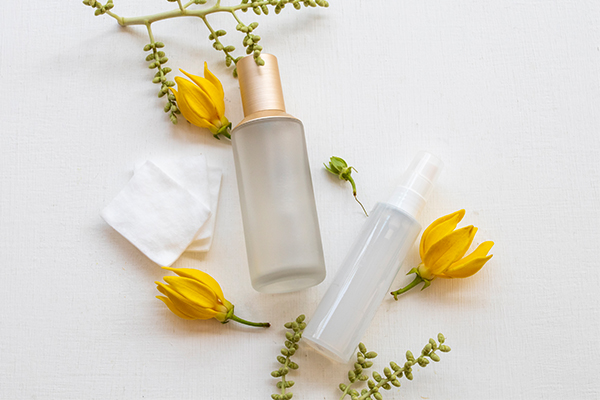Skincare aisles can be confusing, especially when products look similar but do very different jobs. Two of the most debated products are exfoliant vs toner. Both are beneficial, but they target different skin needs. Understanding their roles, benefits, and differences will help you build a skincare routine that works for you.
What Is an Exfoliant?
An exfoliant is a product that helps slough away dead skin cells sitting on the skin’s surface. Without exfoliation, dead skin can pile up, causing dullness, breakouts, and uneven texture. By exfoliating regularly, your skin looks fresher and feels smoother.
What Is a Toner?
Toner is a lightweight liquid applied after cleansing. It balances your skin’s natural pH, hydrates, and preps it for serums or moisturizers. Unlike old-school toners that were harsh and drying, modern versions are soothing, hydrating, and packed with nutrients.
Why Exfoliation Matters in Skincare
Your skin naturally sheds dead cells, but this process slows down with age, stress, and environmental damage. Exfoliation speeds things up, revealing new, healthy skin cells underneath. It’s the key to achieving that “lit-from-within” glow.
Why Toner Matters in Skincare
Think of toner as a reset button for your skin. After cleansing, your skin’s pH can shift, making it vulnerable. Toner restores balance, adds hydration, and primes your skin to absorb whatever comes next—serums, oils, or creams.
Types of Exfoliants
Physical Exfoliants
These contain tiny particles like sugar, coffee, or rice powder that scrub the skin. They provide instant smoothness but can be abrasive if used too often.
Chemical Exfoliants
Made with acids such as AHA, BHA, and PHA, these gently dissolve the bonds holding dead cells together. They penetrate deeper than scrubs.
Enzyme Exfoliants
Extracted from fruits like papaya or pineapple, enzyme exfoliants are gentle enough for sensitive skin. They digest dead cells naturally without irritation.
Types of Toners
There are few types of Toners.
Hydrating Toners: Rich in humectants like glycerin and hyaluronic acid, they plump the skin with moisture.
Exfoliating Toners: Contain mild acids to provide daily mini-exfoliation. They are gentler than standalone exfoliants but should be used with caution.
Balancing Toners: Help regulate sebum production, perfect for oily and combination skin.
Soothing Toners: Formulated with calming ingredients like aloe vera, green tea, or chamomile to reduce redness and irritation.
Exfoliant vs Toner: The Key Differences
- Exfoliants actively remove dead skin buildup.
- Toners maintain hydration, balance, and readiness for further treatment.
- Exfoliants are used sparingly, while toners can be part of your daily routine.
How Exfoliants Work on Skin
Exfoliants break the bonds of dead skin cells and unclog pores. This not only prevents breakouts but also allows skincare products to penetrate more effectively. Over time, they stimulate collagen and elastin, leading to firmer, youthful skin.
How Toners Work on Skin
Toners act like a sponge for your skin, allowing it to soak up treatments better. They keep skin hydrated, calm irritation, and ensure your skin isn’t left tight or stripped after cleansing.
When to Use an Exfoliant
Use exfoliants at night, 1–3 times per week. Daytime use can make your skin more sensitive to the sun. Always follow with sunscreen if you exfoliate in your PM routine.
When to Use a Toner
Toner should be used morning and evening right after cleansing. It’s a step you don’t want to skip since it makes everything that follows more effective.
Can You Use Exfoliant and Toner Together?
Yes, but smart layering is important. If your toner already has exfoliating acids, skip a separate exfoliant that day to avoid irritation. If it’s a hydrating toner, it pairs beautifully with an exfoliant.
Choosing the Right Exfoliant for Your Skin Type
- Oily skin: Go for BHAs like salicylic acid to unclog pores.
- Dry skin: Use AHAs like lactic acid for gentle resurfacing.
- Sensitive skin: Opt for enzyme or PHA-based exfoliants for minimal irritation.
Choosing the Right Toner for Your Skin Type
- Acne-prone: Witch hazel or tea tree toners work well.
- Combination skin: Balancing toners with niacinamide.
- Mature skin: Antioxidant-rich hydrating toners for firmness.
Signs You’re Over-Exfoliating
If your skin feels tight, red, flaky, or stings when applying products, you’re likely over-exfoliating. Step back, focus on hydration, and let your skin recover.
Signs You’re Using the Wrong Toner
Burning, dryness, or a tight feeling after toner use means it’s too harsh. Switch to an alcohol-free, hydrating formula.
How to Layer Toner and Exfoliant Correctly
- Apply toner after cleansing.
- Use exfoliant only on scheduled days.
- Never use two exfoliating products together unless advised by a dermatologist.
Step-by-Step Skincare Routine Including Toner and Exfoliant
- Cleanser
- Toner
- Exfoliant (only on chosen nights)
- Serum (vitamin C, hyaluronic acid, or niacinamide)
- Moisturizer
- Sunscreen (for morning routines)
Do You Really Need Both?
Yes—if glowing, balanced, and healthy skin is your goal. Exfoliants clear the old, toner nourishes and balances, and together they build a foundation for effective skincare.
Extra Tips for Beginners
- Always patch test before trying new exfoliants.
- Introduce one product at a time.
- Sunscreen is non-negotiable when exfoliating.
- Don’t confuse micellar water with toner—they are not the same.
Conclusion
Exfoliants and toners are not interchangeable—they are complementary. Exfoliants remove what shouldn’t be there, while toners add what your skin truly needs. When used correctly, they can completely transform your routine, giving you clearer, softer, and more radiant skin.

